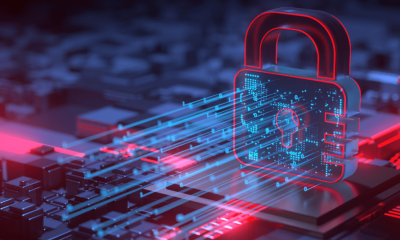News
Enhancing Data Literacy for Better Decision-Making in Nigeria through NITDA’s DL4ALL Initiative

Enhancing Data Literacy for Better Decision-Making in Nigeria through NITDA’s DL4ALL Initiative
“In God we trust. All others must bring data.” — W. Edwards Deming
By Ernest Ogezi
In the digital era, data has become the new currency, driving decisions in every sector from business to healthcare, education, and governance. In Nigeria, the importance of data literacy—the ability to understand, interpret, and effectively use data—has never been more apparent. As the country seeks to establish itself in the global digital economy, the need for enhanced data literacy among its citizens, businesses, and institutions is critical for informed decision-making and sustainable development.
In an increasingly data-driven world, the ability to navigate, interpret, and draw meaningful insights from data is a vital skill. For Nigeria, a country with a rapidly growing population and economy, data literacy is a powerful tool for addressing complex challenges, from economic development and public health to education and social welfare. With the rise of big data, artificial intelligence, and the Internet of Things (IoT), individuals and organizations are continuously generating and interacting with vast amounts of information.
Data literacy empowers individuals to make informed decisions, whether they are students, entrepreneurs, or policymakers. For businesses, especially in Nigeria’s dynamic informal sector, understanding data can lead to better market strategies, efficient resource management, and increased competitiveness. For government agencies and NGOs, data literacy is essential for designing effective policies, allocating resources wisely, and measuring the impact of programs. In education, it helps students and educators engage with information critically, fostering a generation of problem-solvers who can drive innovation and growth.
Aware of the importance of data literacy, the National Information Technology Development Agency (NITDA) has taken significant steps to enhance the digital capabilities of Nigerians. Through initiatives like the “Digital Literacy for All” (DL4ALL) program, NITDA aims to equip citizens with essential digital skills, including data literacy. The DL4ALL initiative, launched in partnership with the National Youth Service Corps (NYSC), focuses on empowering individuals to browse, search, filter, and evaluate digital content effectively.
Data literacy is a key component of NITDA’s broader Strategic Roadmap and Action Plan (SRAP 2.0), which emphasizes building a digitally savvy population capable of participating actively in the global digital economy. The agency recognizes that to harness the full potential of data, individuals must not only access it but also interpret and use it meaningfully. By integrating data literacy into its digital literacy programs, NITDA is fostering a culture where data becomes a crucial part of decision-making processes across all sectors.
Nigeria’s informal sector, which employs a significant portion of the population, stands to benefit immensely from enhanced data literacy. Market traders, small business owners, artisans, and entrepreneurs can use data to better understand customer preferences, manage inventory, optimize pricing strategies, and forecast market trends. For example, by analyzing sales data, a market vendor can identify the best-selling products, peak shopping hours, and customer demographics, enabling them to tailor their offerings and maximize profits.
Data literacy is also essential for effective governance and policy-making. In Nigeria, where resource allocation, public health, education, and infrastructure development are critical issues, data-driven decision-making can lead to more targeted and impactful interventions. By analyzing data on population demographics, economic activities, health trends, and educational outcomes, policymakers can identify gaps, monitor progress, and adjust strategies to address the needs of different communities more effectively.
NITDA’s efforts to promote data literacy through initiatives like DL4ALL are steps in the right direction, laying the foundation for a digitally literate society. As Nigeria continues its journey towards becoming a leader in the digital economy, building a culture of data literacy will be crucial for navigating the complexities of the modern world and ensuring sustainable development for all.
Headlines
Noble Ladies Champion Women’s Financial Independence at Grand Inauguration in Abuja

Women from diverse backgrounds across Nigeria and beyond gathered at the Art and Culture Auditorium, Abuja, for the inauguration and convention of the Noble Ladies Association. The event, led by the association’s Founder and “visionary and polished Queen Mother,” Mrs. Margaret Chigozie Mkpuma, was a colourful display of feminine elegance, empowerment, and ambition.
The highly anticipated gathering, attended by over 700 members and counting, reflected the association’s mission to help women realise their potential while shifting mindsets away from dependency and over-glamorization of the ‘white collar job.’ According to the group, progress can be better achieved through innovation and creativity. “When a woman is able to earn and blossom on her own she has no reason to look at herself as a second fiddle,” the association stated.
One of the association’s standout initiatives is its women-only investment platform, which currently offers a minimum entry of ₦100,000 with a return of ₦130,000 over 30 days—an interest rate of 30 percent. Some members invest as much as ₦1 million, enjoying the same return rate. Mrs. Mkpuma explained that the scheme focuses on women because “women bear the greater brunt of poverty” and the platform seeks “to offer equity in the absence of economic equality.”
Education is also central to the Noble Ladies’ mission, regardless of age. Their mantra, “start again from where you stopped,” encourages women to return to school or upgrade their skills at any stage in life. The association believes that financial stability is vital in protecting women from cultural practices that dispossess widows of their late husbands’ assets, while also enabling them to raise morally and socially grounded families.
Founded on the vision of enhancing women’s skills and achieving financial stability, the association rests on a value system that discourages pity and promotes purpose. “You have a purpose and you build on that purpose to achieve great potentials and emancipation,” Mrs. Mkpuma said.
A criminologist by training and entrepreneur by practice, she cautions against idleness while waiting for formal employment. “There are billions in the informal and non-formal sectors waiting to be made,” she said, rejecting the “new normal of begging” and urging people to “be more introspective to find their purpose in life and hold on to it.”
Mrs. Mkpuma’s management style keeps members actively engaged, focusing on vocational skills and training to prepare them for competitive markets. She is exploring “innovative integration of uncommon technologies” and is already in talks with international franchises to invest in Nigeria, with Noble Ladies as first beneficiaries.
The association’s core values include mutual respect, innovation, forward-thinking, equal opportunity, and financial emancipation. With plans underway to establish a secretariat in the heart of Abuja, the group aims to expand its impact.
The event drew high-profile guests, including former Inspector General of Police, Mike Okiro, and a host of VIPs, marking a significant milestone in the association’s drive for women’s empowerment.
Headlines
NEPZA, FCT agree to create world-class FTZ environment

The Nigeria Export Processing Zones Authority (NEPZA) has stepped in to resolve the dispute between the Federal Capital Territory Administration and the Abuja Technology Village (ATV), a licensed Free Trade Zone, over the potential revocation of the zone’s land title.
Dr. Olufemi Ogunyemi, the Managing Director of NEPZA, urged ATV operators and investors to withdraw the lawsuit filed against the FCT administration immediately to facilitate a roundtable negotiation.
Dr. Ogunyemi delivered the charge during a courtesy visit to the Minister of the Federal Capital Territory, Barrister Nyesom Wike, on Thursday in Abuja.
You will recall that the ATV operators responded to the revocation notice issued by the FCT administration with a lawsuit.
Dr. Ogunyemi stated that the continued support for the growth of the Free Trade Zones Scheme would benefit the nation’s economy and the FCT’s development, emphasizing that the FCT administration recognized the scheme’s potential to accelerate industrialisation.
Dr. Ogunyemi, also the Chief Executive Officer of NEPZA, expressed his delight at the steps taken by the FCT minister to expand the economic frontier of the FCT through the proposed Abuja City Walk (ACW) project.
Dr. Ogunyemi further explained that the Authority was preparing to assess all the 63 licensed Free Trade Zones across the country with the view to vetting their functionality and contributions to the nation’s Foreign Direct Investment and export drives.
“I have come to discuss with His Excellency, the Minister of the Federal Capital Territory on the importance of supporting the ATV to succeed while also promoting the development of the Abuja City Walk project. We must work together to achieve this for the good of our nation,” he said.
On his part, the FCT Minister reiterated his unflinching determination to work towards President Bola Ahmed Tinubu’s Renewed Hope Agenda by bringing FDI to the FCT.
“We must fulfil Mr. President’s promises regarding industrialization, trade, and investment. In this context, the FCT will collaborate with NEPZA to review the future of ATV, a zone that was sponsored and supported by the FCT administration,” Wike said.
Barrister Wike also said that efforts were underway to fast-track the industrialisation process of the territory with the construction of the Abuja City Walk.
The minister further said the Abuja City Walk project was planned to cover over 200 hectares in the Abuja Technology Village corridor along Airport Road.
According to him, the business ecosystem aimed to create a lively, mixed-use urban center with residential, commercial, retail, hospitality, medical, and institutional facilities.
He added that the ACW would turn out to be a high-definition and world-class project that would give this administration’s Renewed Hope Agenda true meaning in the North-Central Region of the country.
Barrister Wike also indicated his continued pursuit of land and property owners who failed to fulfil their obligations to the FCT in his determination to develop the territory.
Headlines
Benue IDPs block highway, demand return to ancestral homes

Vehicular movement along the Yelwata axis of the Benue–Nasarawa highway was brought to a standstill on Wednesday as Internally Displaced Persons, IDPs, staged a protest, demanding immediate return to their ancestral homes.
The protesters, believed to be victims of persistent attacks by suspected herdsmen, blocked both lanes of the busy highway for several hours, chanting “We want to go back home”.
The protest caused disruption, leaving hundreds of motorists and passengers stranded.
Eyewitnesses said the displaced persons, many of whom have spent years in overcrowded IDP camps, are expressing deep frustration over the government’s delay in restoring security to their communities.
“We have suffered enough. We want to return to our homes and farms,” one of the protesters told reporters at the scene.
Security personnel were reportedly deployed to monitor the situation and prevent any escalation, though tensions remained high as of press time.
Efforts to reach the Benue State Emergency Management Agency, SEMA, and other relevant authorities for comment were unsuccessful.
-

 Headlines4 years ago
Headlines4 years agoFacebook, Instagram Temporarily Allow Posts on Ukraine War Calling for Violence Against Invading Russians or Putin’s Death
-

 Headlines4 years ago
Headlines4 years agoNigeria, Other West African Countries Facing Worst Food Crisis in 10 Years, Aid Groups Say
-

 Foreign4 years ago
Foreign4 years agoNew York Consulate installs machines for 10-year passport
-

 News1 year ago
News1 year agoZero Trust Architecture in a Remote World: Securing the New Normal
-

 Entertainment3 years ago
Entertainment3 years agoPhyna emerges winner of Big Brother Naija Season 7
-

 Headlines1 year ago
Headlines1 year agoNigeria Customs modernisation project to check extortion of traders
-

 Entertainment2 years ago
Entertainment2 years agoMovie download platform, Netnaija, announces closure
-

 Economy2 years ago
Economy2 years agoWe generated N30.2 bn revenue in three months – Kano NCS Comptroller
















